1.Mount Wutai
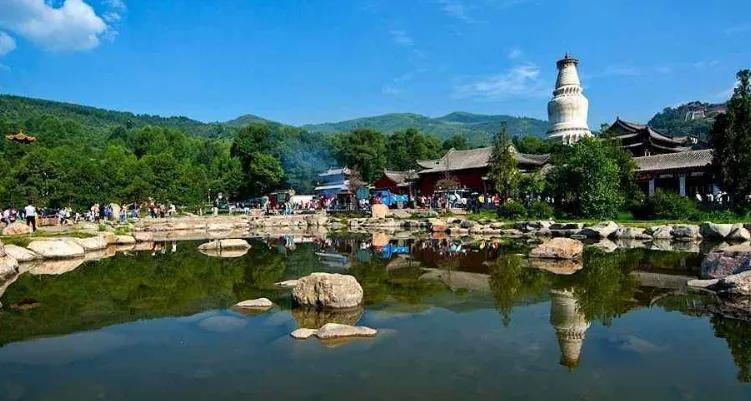
Mount Wutai, located in Wutai County, Xinzhou City, Shanxi Province, is the dojo of Manjusri Bodhisattva, who is known as the “first in wisdom”. It ranks first among the four famous Buddhist mountains and is also one of the five major Buddhist holy places in the world. Mount Wutai is not a mountain, but consists of five peaks, and the peaks are flat like terraces, so it is called Mount Wutai. Mount Wutai is composed of the East Terrace Wanghai Peak, the West Terrace Guayue Peak, the South Terrace Jinxiu Peak, the North Terrace Yedou Peak, and the Central Terrace Cuiyan Peak. The area outside the five peaks is called Taiwai, and the area inside the five peaks is called Tainei. The area surrounded by the five terraces forms an embrace, named Taihuai Town. The entire structure is very much like a human palm, and the five terrace tops are the five fingers of the palm, and Taihuai Town is the palm of a person’s hand.
2.Pingyao Ancient City
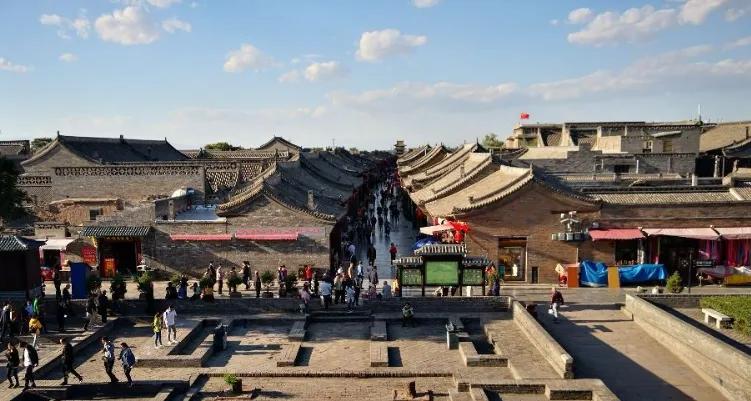
Pingyao Ancient City, located in Pingyao County, Jinzhong City, Shanxi Province, is the best-preserved ancient county town of the Han nationality in China. It is an outstanding example of Chinese cities in the Ming and Qing Dynasties. In the development of Chinese history, it has presented people with a complete picture of the extraordinary cultural, social, economic and religious development. The ancient city is a culmination of strong national style and local characteristics. It is vicissitudes and thick. When you step on the long stones of Pingyao Ancient City, you will feel so solid and heavy.
3.Linfen Hukou Waterfall
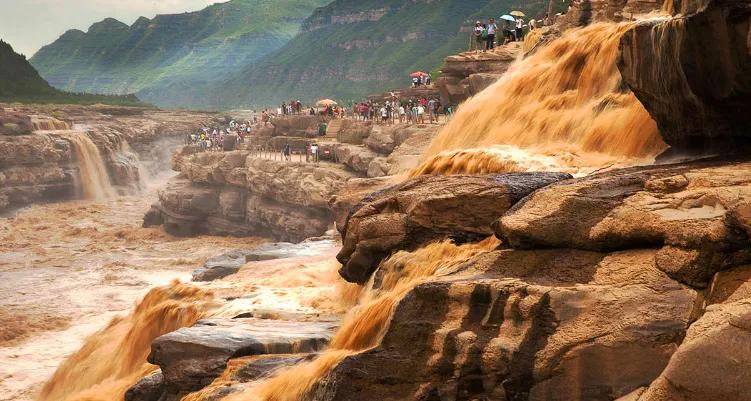
Linfen Hukou Waterfall, located in Hukou Town, Ji County, Linfen City, Shanxi Province, is the only yellow waterfall on the Yellow River and the second largest waterfall in China, known as the “Yellow River Wonder”. The scenic area centered on Hukou Waterfall integrates the Yellow River Canyon, the Loess Plateau, and the ancient plateau villages, showing the natural landscape and rich historical and cultural heritage of the Yellow River Basin.
4.Yungang Grottoes
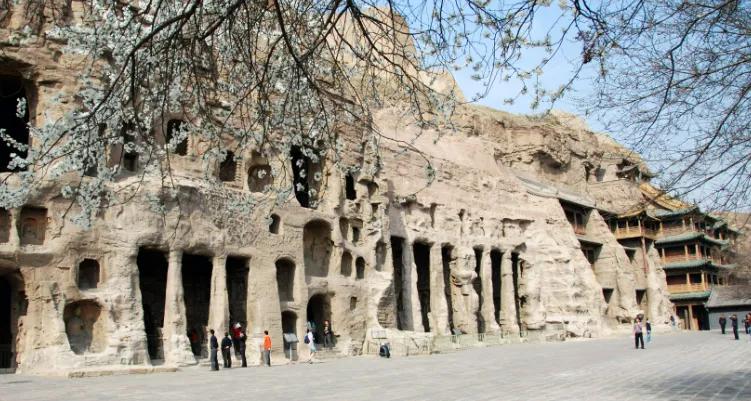
Yungang Grottoes, located in Datong City, Shanxi Province, were carved by the Northern Wei Dynasty royal family, which ruled northern China at that time, with the concentrated national skills, manpower and material resources. It is one of the four major grottoes in my country. The scenic area is divided into a landscape area and a grotto group, among which the grotto group is the biggest attraction and is divided into three areas. The third cave is the largest grotto in Yungang, and the fifth and sixth caves are double caves. The murals in the caves are exquisite and are the most representative grottoes in Yungang Grottoes.
5.Taihang Mountain Grand Canyon

Taihang Mountain Grand Canyon is located in Huguan County, Changzhi City, Shanxi Province. Its main attractions include Baquan Gorge, Hongdou Gorge, Qinglong Gorge, Heilongtan and Zituan Mountain. Baquan Gorge has nearly 100 scenic spots and is the core tourist area of Taihang Mountain Grand Canyon. There are eight springs around the cliffs on the north side of Baquan Gorge. Water flows all year round. Fountains and waterfalls fall straight to the bottom of the valley and merge into eight streams of water, hence the name Baquan Gorge. Hongdou Gorge is named after the rare tree species of yew, which grows naturally in the territory. It is a scenic spot that combines the masculine and rough nature of the north with the feminine and beautiful beauty of the south.
6.Yanmen Pass
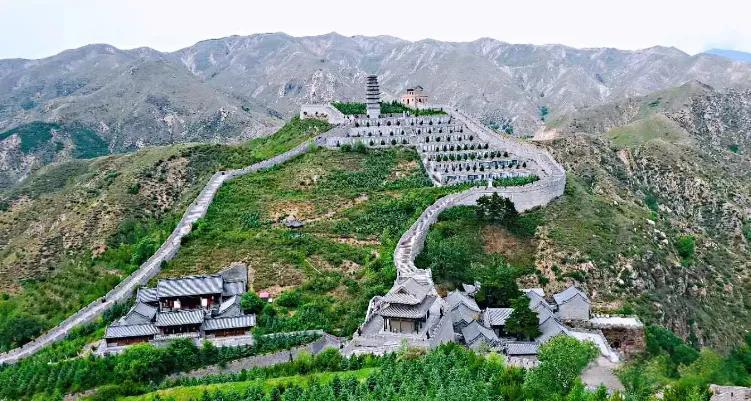
Yanmen Pass, located in Yanmen Mountain, Dai County, Xinzhou City, Shanxi Province, is a pass on the Inner Great Wall of the Ming Dynasty. Together with Ningwu Pass and Pianguan, it is known as the “Outer Three Passes.” Yanmen Pass has been an important pass for the Central Plains dynasties to resist the invasion of northern nomadic peoples since ancient times. The earliest history here can be traced back to the Warring States Period when King Wuling of Zhao fought against the Huns here; the famous Han Dynasty generals Li Guang, Wei Qing, and Huo Qubing once led troops to fight against the Huns here; in the Northern Song Dynasty, Yanmen Pass became the main battlefield for the confrontation between Song and Liao. The prototype of the well-known story of the Yang Family Generals took place here. There is also a statue of Yang Liulang in the scenic area.
7.Imperial City Prime Minister’s Mansion
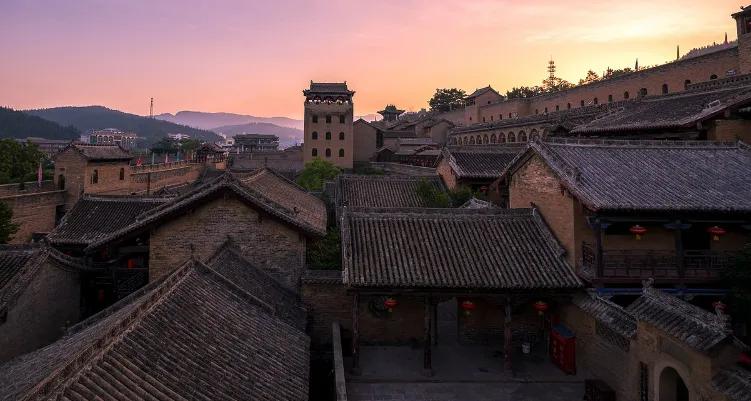
The Imperial City Prime Minister’s Mansion Cultural Ecological Tourism Area is located in Beiliu Town, Yangcheng County, Jincheng City, Shanxi Province. It consists of four scenic spots: Imperial City Prime Minister’s Mansion, Jiunuxian Lake, Imperial City Xiaokang New Village and Ecological Agriculture Sightseeing Park. The Imperial City Prime Minister’s Mansion Scenic Area is the former residence of Chen Tingjing, a famous prime minister who served as a minister of Wenyuan Pavilion and the Minister of Personnel of the Qing Dynasty, the chief reviewer of the Kangxi Dictionary, and the teacher of Emperor Kangxi. It consists of the inner city, the outer city, Ziyunqian, and the Xishan Courtyard. It is a rare castle-style official residential building complex in the Ming and Qing dynasties. It is praised by experts as “the home of the first cultural giant in northern China”. The Jiunuxian Lake Scenic Area is the place where the nine fairies descended to the earth in the legend. It meanders through the green mountain valleys. The lake is more than 20 miles long, like the Lijiang River and the Three Gorges. It is one of the important natural scenery tourist areas in northern my country. Since ancient times, it has been a popular place for gentry, officials, and literati to linger and play.
8.Yunqiu Mountain

Yunqiu Mountain is located in Xiangning County, Linfen City, Shanxi Province. It is said that this was the place where Tang Yao, Yu Shun and Xia Yu observed the sky and made predictions in ancient times. The “Zhonghe Culture” continues here. In addition to the beautiful legend, Yunqiu Mountain is also a holy place where Confucianism, Taoism and Buddhism are integrated. There are Confucian Yunqiu Academy, Buddhist Duobao Lingyan Temple and more Taoist temples in the mountain. During the Northern Song Dynasty, the western and northern borders were repeatedly invaded by enemies, so the royal family worshipped the powerful Zhenwu Emperor to protect the country and the people; in the Yuan Dynasty, this was also the birthplace of the Longmen School of Taoism.
9.Mianshan
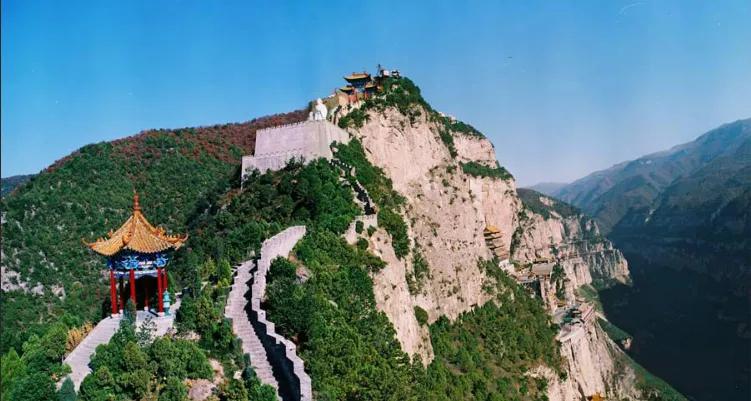
Mianshan Scenic Area is located in Nanhuaizhi Village, Mianshan Town, Jiexiu City, Jinzhong City, Shanxi Province. Mianshan, also known as Jieshan, is a branch of Taiyue Mountain (Huoshan) extending northward. The mountains here are steep, with many cliffs and green pines and cypresses. The natural scenery is very beautiful and there are many cultural attractions. There are more than 100 caves of various sizes in the mountain, mainly Baofu Rock, Fengfang Spring, Ligu Rock, and Lengyanhui. There are currently more than 20 temples in the mountain.
10.The Great Sophora Tree Root-Seeking and Ancestor-Worshiping Garden
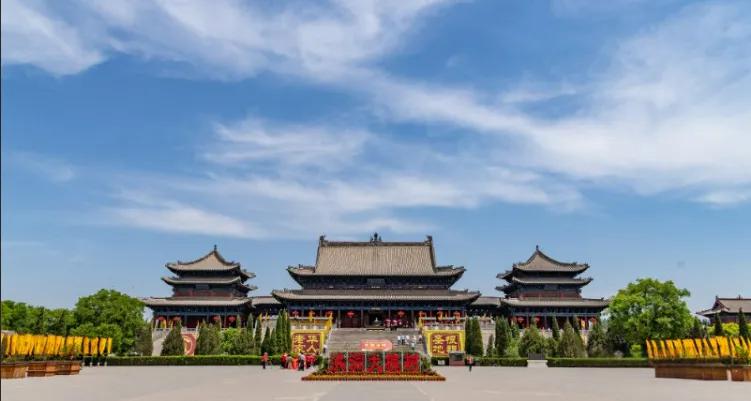
Hongtong Big Sophora Tree Root-seeking and Ancestor-worshiping Park Scenic Area, located in Hongtong County, Shanxi Province, is the only folk worship holy place in China with the theme of “root-seeking” and “ancestor worship”. It is a famous Ming Dynasty immigrant site. The scenic area is divided into four major theme areas: “Immigration Historic Area”, “Ancestor Worship Activity Area”, “Folk Customs Tour Area” and “Fenhe Ecological Area”. There are more than 60 scenic and cultural attractions such as stele pavilions, second and third generation big sophora trees, thousand-year-old sophora roots, immigrant reliefs, Chinese surname gardens, ancestral worship halls, Guangji Temple, stone sutra pillars, etc.
11.Qiao Family Courtyard

Qiao Family Courtyard, located in Qiaojiabao Village, Dongguan Town, Qi County, Jinzhong City, Shanxi Province, was formerly known as “Zhongzhongtang”. It was the residence of Qiao Zhiyong, a famous commercial and financial capitalist in the Qing Dynasty. The buildings here are majestic and magnificent. Looking down from the sky, the courtyard is in the shape of a double “Xi” character. There is a saying that “the royal family looks at the Forbidden City, and the civilian houses look at Qiao’s family.” On the brick-carved screen wall opposite the gate, there is a picture of “One longevity becomes a hundred longevity” composed of 100 different styles of “Shou” characters, which is a rare work of art. On the top floor of the courtyard, there is a plaque with the words “Fu Zhong Lang Kui”, which was given by the Empress Dowager Cixi to the governor of Shanxi.
12.Jinci

Jinci, located in Jinci Town, Jinyuan District, Taiyuan City, Shanxi Province, is a scenic spot and historic site combining natural landscapes with artificial buildings, known as the “Little Jiangnan of Shanxi”. In the middle of Jinci, starting from the entrance of Jingqing Gate and Shuijingtai, there are Huixian Bridge, Jinrentai, Duiyuechang, Xiandian, Bell and Drum Tower, Yuzhao Feiliang and Shengmu Hall, which are the main body of the temple, with Shengmu Hall as the main part. In the north, starting from Wenchang Palace, there are Dongyue Temple, Guandi Temple, Sanqing Cave, Tangshu Temple, Chaoyang Cave, Daifengxuan, Santai Pavilion, Dushutai and Luzu Pavilion. In the south, starting from Shengying Tower, there are Baihe Pavilion, Sansheng Temple, Zhenqu Pavilion, Laoquan Pavilion, Shuimu Tower and Gongshuzi Temple.
13.Hengshan
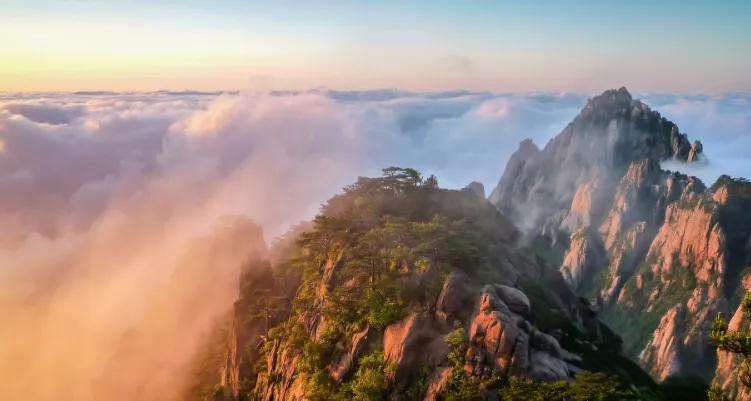
Hengshan Mountain, located in Hunyuan County, Datong City, Shanxi Province, is one of the Five Sacred Mountains of China, along with Mount Tai, Mount Hua, Mount Heng, and Mount Song. It has been a famous scenic spot in northern China and one of the important birthplaces of Taoism since ancient times. It is an outstanding representative of China’s splendid mountains and rivers, an important national geographical symbol, carrying the symbols of Chinese civilization, and nurturing a deep regional culture and folk customs, and has the status of a national mountain.
14.Heyeping
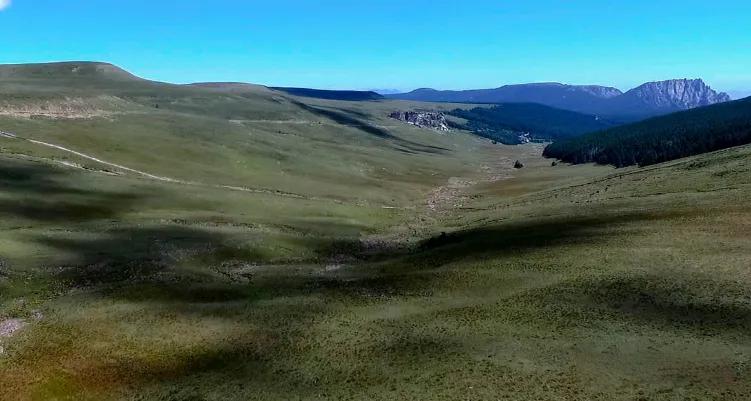
Heyeping Ecological Tourism Area is located in the south of Wuzhai County, Shanxi Province, at the junction of Ningwu, Wuzhai and Kelan counties. It is known as the “Home of Spruce” and “Home of North China Larix”, and is the largest subalpine meadow in North China. The strange rocks here are also unique, dazzling and amazing. This place is called “a green world, a sea of flowers, and a paradise for animals and plants.”
15.Luya Mountain

Luya Mountain Scenic Area, located in Ningwu County, Xinzhou City, Shanxi Province, is a “northern primitive landscape tourist attraction” that is unique in North China and the most beautiful in Shanxi. Luya Mountain Scenic Area includes Wannian Ice Cave, Cliff Plank Road, Shimen Hanging Coffin, Fenhe River Source, Tianchi Lake Group, Zhiguo Stone, Luya Mountain, Malun Grassland, Lover’s Valley and other attractions. Luya Mountain is 2,788 meters above sea level, with different scenery in four seasons, and it can be called Shangri-La in northern China.
16.Wangmangling
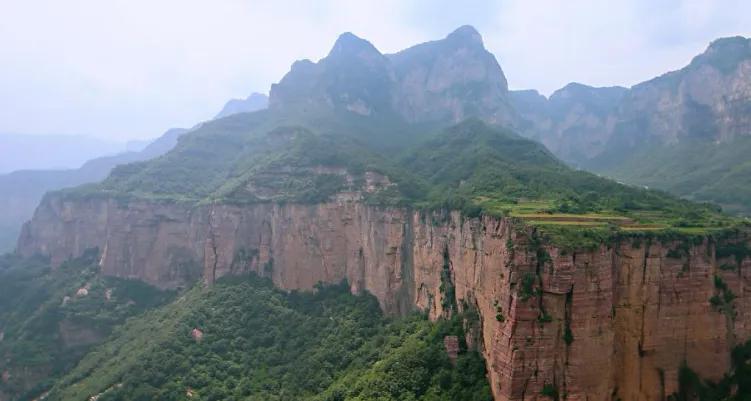
Wangmangling Scenic Area, located in Lingchuan County, Jincheng City, Shanxi Province, is the most representative landscape in the fault geological belt between Taihang Mountains and Zhongzhou Plain and a typical representative of Taihang Mountain scenery. According to legend, Wang Mang of the Western Han Dynasty set up camp here to pursue Liu Xiu, hence the name Wangmangling. The scenic area consists of four landscape systems: Wangmangling, Xiyagou, Kunshan, and Liuxiucheng. Standing on the top of the mountain, you can see the majestic appearance of Taihang Mountains and the Central Plains. Yuan Haowen, a literary giant in the Jin and Yuan Dynasties, called it “the cool holy land”.
17.Monastery
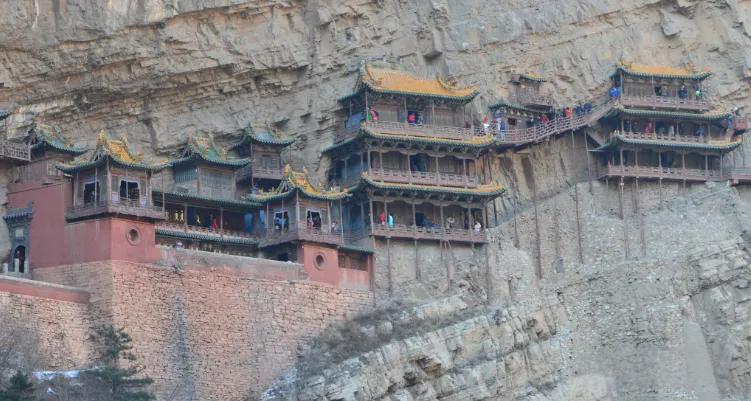
Xuankong Temple, located in Hunyuan County, Datong City, Shanxi Province, was originally called “Xuankong Pavilion” and later renamed “Xuankong Temple” because the entire temple looks like it is hanging on a cliff. The entire temple is a wooden frame structure, with 40 halls, pavilions, and towers. In fact, the suspended temple is not large, and the most amazing thing is that it relies on mortise and tenon joints to be embedded in the cliff without collapsing. The Hanging Temple was first built in the Northern Wei Dynasty and has a history of over 1500 years. It is the earliest and best preserved high-altitude wooden cliff building in China.
18.Qikou Ancient Town

Qikou Ancient Town is located in the scenic area of Lvliang City, Shanxi Province. Qikou Ancient Town is a military stronghold and became a famous commercial and trade town in northern China during the Ming and Qing dynasties to the Republic of China, thanks to the Yellow River water transportation. It enjoys the reputation of “the first town of the Nine Bend Yellow River”. There are abundant and well preserved buildings from the Ming and Qing dynasties in the town, mainly including various commercial buildings such as warehouses, ticket counters, pawnshops, temples, residential buildings, docks, etc., almost including all types of typical folk transportation and commercial towns under the feudal system. Due to the primitive and simple way of life of its residents, the ancient town is also known as the “living ancient town”.
19.Mengshan Giant Buddha
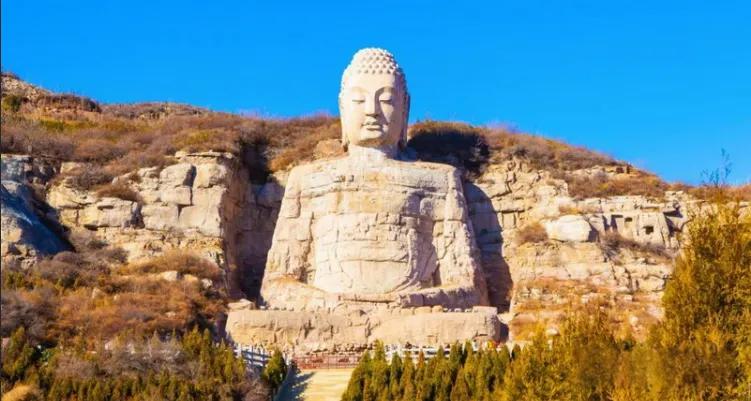
Mengshan Great Buddha, also known as Xishan Great Buddha, is located in Mengshan, about 20 kilometers southwest of Taiyuan City, Shanxi Province. The Great Buddha of Mengshan was excavated during the Tianbao period of the Northern Qi Dynasty. It was originally a cliff Buddha statue after the Kaihua Temple in Mengshan. At the end of the Yuan Dynasty, the Great Buddha of Mengshan was destroyed. The Buddha was rediscovered in 1980, but the Buddha’s head is now unknown. The head of the current Buddha statue was newly chiseled by later generations. The height from the bottom of the legs to the neck of the Mengshan Giant Buddha is about 30 meters. Calculated proportionally, including the height of the Buddha’s head, the original height of the Buddha was about 46 meters.
20.Lishan
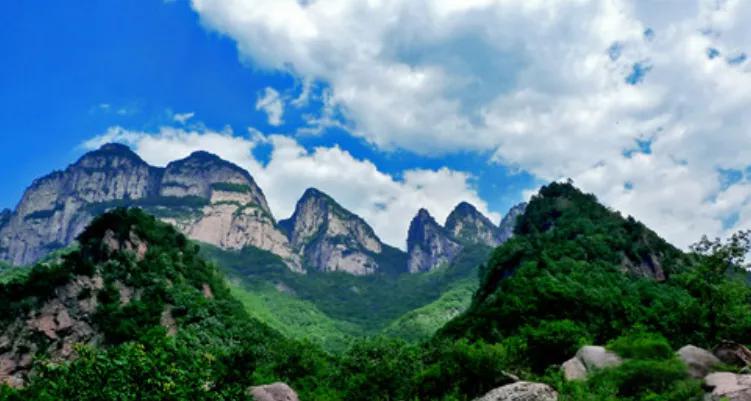
Lishan Scenic Area is located in Lishan Town, Yuanqu County, Yuncheng City, Shanxi Province. The main peak of Lishan, Shunwangping, with an altitude of 2321.8 meters, is the highest peak in southern Shanxi. The scenic area is divided into the Yellow River Xiaolangdi Reservoir Area Tourist Area, Lishan Shunwangping, Huanggu Man, Macaque Source and other scenic spots. Lishan Scenic Area has well preserved primitive forests in North China, large artificial water surfaces in North China, and large ornamental subalpine meadows. The mountains in the scenic area are undulating and the trees are lush.
21.Manghe River
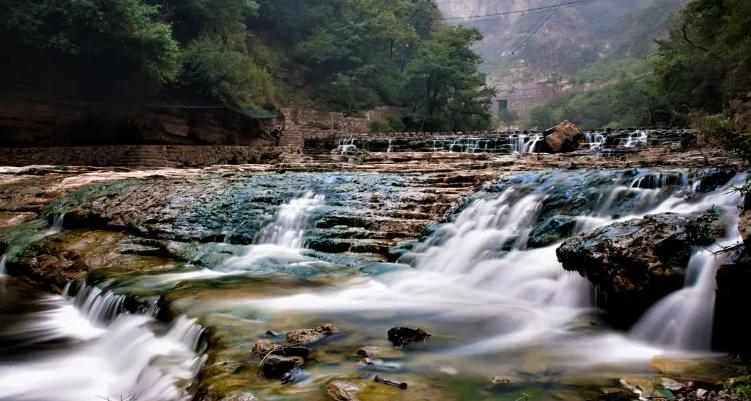
Manghe Scenic Area, located in Sanglin Township, Yangcheng County, Jincheng City, Shanxi Province, is a macaque nature reserve. The Manghe Scenic Area is known as the “Little Guilin of the Loess Plateau”. The main water features include: Shuidian Cave, Erlong Playing with Pearl, Shuilian Cave, Yinma Spring, Xiaohuangguoshu Waterfall, Liuyin Waterfall, Huanglong Waterfall, Heilong Waterfall, Tianlong Waterfall, Mang Lake, etc; The mountains of Mang River are layered and undulating. The Manghe Scenic Area has a total of 285 species of animals and 882 species of seed plants.
22.Tibetan Mountain

Cangshan Scenic Area is located in Changchi Town, Yuxian County, Yangquan City, Shanxi Province, China. It is named after the hiding of Zhao family orphans during the Spring and Autumn Period. According to legend, during the Spring and Autumn Period, Zhao Shuo, a high-ranking official of the State of Jin, was killed by the Duke of Jin. Before his death, Zhao Shuo entrusted his posthumous orphan to his disciple Cheng Ying, who sacrificed his own child and took Zhao Wu, Zhao Shuo’s orphan, to hide in Yushan for 15 years. This is the famous story of Zhao’s orphan. In order to praise the heroic deeds of Cheng Ying, Gongsun Chujiu and others who sacrificed their lives for righteousness, later generations erected temples in the Tibetan mountains to offer sacrifices, and incense and fire continued to burn from generation to generation.
23.Wang Family Courtyard

The Wang Family Mansion is located in Jingsheng Town, Lingshi County, Shanxi Province. It was built by the Jingsheng Wang family during the Ming and Qing dynasties, lasting more than 300 years. Although not as famous as the Qiao Family Mansion, the scale and momentum of the Wang Family Mansion are definitely second to none among the Jin merchants’ mansions. People who have been to the Wang Family Mansion will exclaim that this is not a “mansion”, it is simply a city! It is precisely because of its majestic momentum, as well as its achievements in architecture and culture, that it has always been known as the “Wang family returns without looking at the courtyard”. The Wang Family Mansion consists of five alleys, five castles, and five ancestral halls.
